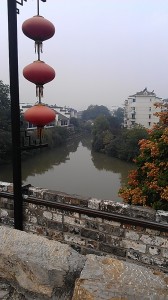October 30th 2012
Selling in China. They sell value. Part 2 of 2.
Selling in China. They sell value. Part 2 of 2.
 I just returned from a 14 day trip to Southeastern China and Hong Kong . These bus trips are part of the Chinese stimulus program where the govt subsidizes the travel of expatriates in order to get them to visit many government owned industries to buy Chinese products as well as stay in tourist hotels and eat in large tour oriented restaurants. This directly employs people in the tourist and manufacturing industries and is quite a smart idea, as people do spend money. I reviewed several instances of Chinese salespeople interacting with expatriate Chinese ( with apologies, my Mandarin is poor) . Some of my sales beliefs were reinforced as I observed how the Chinese sales person sells on value. It is all to easy for Westerners to think that the Asian sales technique is about the price. Price has a place but it is not the first thing that is raised.
I just returned from a 14 day trip to Southeastern China and Hong Kong . These bus trips are part of the Chinese stimulus program where the govt subsidizes the travel of expatriates in order to get them to visit many government owned industries to buy Chinese products as well as stay in tourist hotels and eat in large tour oriented restaurants. This directly employs people in the tourist and manufacturing industries and is quite a smart idea, as people do spend money. I reviewed several instances of Chinese salespeople interacting with expatriate Chinese ( with apologies, my Mandarin is poor) . Some of my sales beliefs were reinforced as I observed how the Chinese sales person sells on value. It is all to easy for Westerners to think that the Asian sales technique is about the price. Price has a place but it is not the first thing that is raised.
Successful sales people in China ( and this is for bigger ticket items, not the universal barker stall tactics) spend upfront time on building relationships with a subtle twist to the Western approach. I saw the process had three parts:
- Introduction of salesperson, the story why this salesperson can be trusted and the building of common ground.
- Why the product and company can be trusted, the value of the product
- The special deal that is extended ( to head off negotiation)
Part 2. Why the product and company can be trusted.
Awards and certifications are very important here. It is not uncommon to see a salesroom wall festooned with plaques and framed documents speaking to ISO certifications, local and international industry awards as well as pictures of famous dignitaries who visited the plant ( ex-President Nixon really got around!) . In one clothing facility we saw pictures of supermodels and celebrities wearing the fabrics. The requisite logos of partner companies are also displayed for all to see.
In the sales process, this documentation is mentioned , but the salesperson goes into detail on the science and research behind the products, the increased durability and ecological advantages. Personal anecdotes are used extensively such as how one guides 88 yr old grandmother has very good health due to drinking a specific tea all her life, and we are going to that tea plantation. In the sales shop it was not out of line for individuals to then spend several hundred dollars on large boxes of tea to take home. Expect to sit through a comprehensive corporate video showing the depth and breadth of the company resources. History pays a large part in these presentations, with some firms proudly tracing their roots hundreds of years. Often, there are often very old, almost priceless art works proudly displayed in company foyers. (Dragons are seen as very good for business as they draw money in.)
We sat through several founder stories where under great hardship, the firm survived many challenges with great strides being made in recent years. Westerners who want to do business here, need to have respect for the old and the promise of the new. Also expect to see charts , diagrams, scale models, or operating micro process plants displayed. This spoke to me of a visual culture – one that wants to see how things work.
We saw tremendous brand awareness toward famous Western brands. If you have strong famous partners, the Chinese want to know this and would wonder why you do not display it proudly.
Part 3 . The special deal
We encountered several posted no negotiation situations. But, there was always a special offer. Examples:
- Buy one get a second of lower value for free.
- The higher the spend, more special gifts were added to the bundle.
- Retail loyalty cards were everywhere – as you bought more your discount became higher through tiered loyalty cards. Basic economic value model in a standardized model.
We saw various negotiation approaches tried effectively to reduce price. E.g. :
- The special friend price (warm introduction)
- The Middle Eastern walkaway
- Low ball countered by multiply the bundle
Yet, the better the job done by the salesperson in building trust and common ground, the shorter the negotiation stage. A few times a buyer would ask ” give me your best price, if I like it you have a deal, if I don’t I will go somewhere else”. This worked sometimes.
I wondered what the final sales price would have been if the value building steps had not been effectively carried out. Strong effective sales people know about preserving price points and margins through building value first remain true in selling in China. Westerners need to understand all the facets of what the Chinese client sees as value. Knowledge of and respect for the sales person as an individual, respect for the company and products and brand value need to be communicated. These are all elements of successful sales persons everywhere, it is just having the sensitivity of knowing how much is needed at each step.
As a postscript we learned that China does not yet have a service culture. To serve is to be of lower value than those being served. In all dealings, one should not place unexpected Western service demands on an individual as it involves a loss of face. Better to look at the whole deal laid out in the beginning with service levels specified. Extra care and detail here will benefit both parties. And be prepared at a restaurant to not have your coffee or tea cup automatically filled, nor will the waitperson smile much!
Related articles
- Forget Anti-Japan Protests – Here’s The REAL Reason Toyota Flopped In China (businessinsider.com)
- Poker chips, X-ray machines, and art: How China’s elite illicitly move money out of the country (qz.com)
- Selling in China. They sell value. Part 1 of 2 (regnordman.com)

Similar Posts:
- Selling in China. They sell value. Part 1 of 2
- Negotiating with Backbone. Eight Sales Strategies to Defend Your price and Value. Reed K. Holden.
- The Next Factory of the World. How Chinese Investment is Reshaping Africa. Irene Yuan Sun
- Implementing a Value Based Sales Approach – Part 4 of 4. Some sales training ideas
- Value-Added Selling. How to sell more profitably, confidently and professionally by competing on value not price. Tom Reilly


